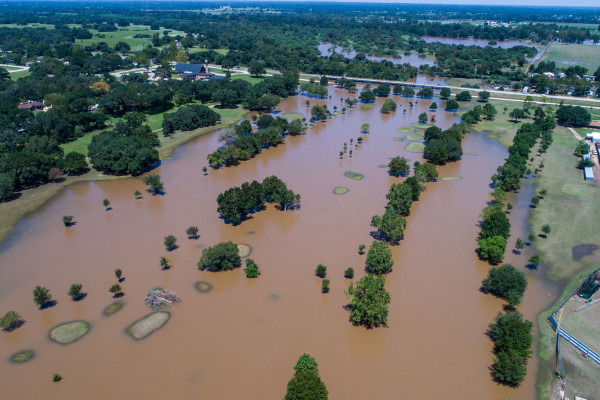SCIPP will build on pre-existing partnerships with water utilities in the Gulf Coast, as well as with the USGS National Wetland and Aquatic Research Center, to determine how climatic changes to extreme low temperatures and freeze return intervals have changed over the last century. We will investigate changes in mean winter temperature, the single coldest temperature recorded each winter, and the frequency of days per winter with temperatures at or below 0°C (i.e., the number of freeze days) to determine how winters have changed. A return interval analysis on the number of events with temperatures below 0°C will be performed at each site using a 30-year moving window. Results of the climate analysis will be compared with observed changes to species, ecosystems, and biomes using data from the National Wetlands Center to determine how sensitive they are to changes in extreme cold temperatures.

Changes in Extreme Events
To continue to refine our knowledge of the physical climate while meeting stakeholder-identified needs, this research theme builds upon SCIPP’s ongoing work by examining reductions in freeze events, stalling hurricanes, storm surge, changes in precipitation patterns, impacts of sea-level rise, and the redistribution of population resulting from hurricane impacts.
Reduction in Freezing Temperatures and Tropicalization of Temperate Climates
Sea-Level Rise Engagement Along the U.S. Gulf Coast
Engagement with coastal stakeholders will be conducted based on a recently updated sea-level rise manuscript to communicate the latest science and its implications for stakeholders. This will extend work that was produced through a previously completed NOAA Coastal and Oceans Climate Applications (COCA) grant. Interested coastal stakeholder groups include floodplain managers, water utilities, and city, county, and parish planning officials. SCIPP will leverage current partners (e.g., Louisiana Sea Grant, Mississippi- Alabama Sea Grant, Texas Sea Grant) and groups (e.g., Gulf of Mexico Alliance, Gulf of Mexico Community of Practice) to disseminate updated estimates, data, information, and resources outlined in the manuscript.
Quantifying Extreme Rainfall using the Storm Precipitation Analysis System
To better understand the spatiotemporal pattern of extreme precipitation events, SCIPP will continue its collaboration with Applied Weather Associates (AWA) (e.g., Keim et al. 2018; Brown et al. 2020b) to create a database of extreme precipitation events across the U.S. (SPAS). AWA has supplied SCIPP with ~800 unique depth-area-duration (DAD) tables for > 500 extreme precipitation events across the U.S from 1810–2019. The storms analyzed by SPAS are generally the largest precipitation events that have occurred in the U.S. in the observational record and control probable maximum precipitation estimates in the country. DAD tables from each storm will be compiled into one database and metadata, such as location (lat./lon.), date, duration, storm type (synoptic characteristics), and magnitude, will be included. This will enable SCIPP to query the database and investigate the spatiotemporal patterns of extreme precipitation analyzed by SPAS.
Forced Retreat of Coastal Populations
This study will examine the redistribution of South Louisiana population over the past 20 years. While Katrina’s impacts were in southeastern Louisiana, Mississippi, and Alabama, the other three hurricanes affected southwestern Louisiana, and some of Ike’s majorly impacted area included eastern Texas. The surge magnitudes of both Katrina and Rita led to a large number of individuals leaving New Orleans and the surrounding area for various periods, including permanently (Fussell et. al. 2014; Plyer 2011). We will examine population census statistics at the county and parish level for the coastal zone from Galveston County, Texas to Mobile County, Alabama to assess changes over time from 2000 to present. We will also conduct a survey assessing the decision making processes of inhabitants that both returned to the coast and those that did not. We will examine demographic data to assess ethnicity/race, socioeconomic status, levels of education, etc., and how these parameters have changed since Hurricane Katrina.
